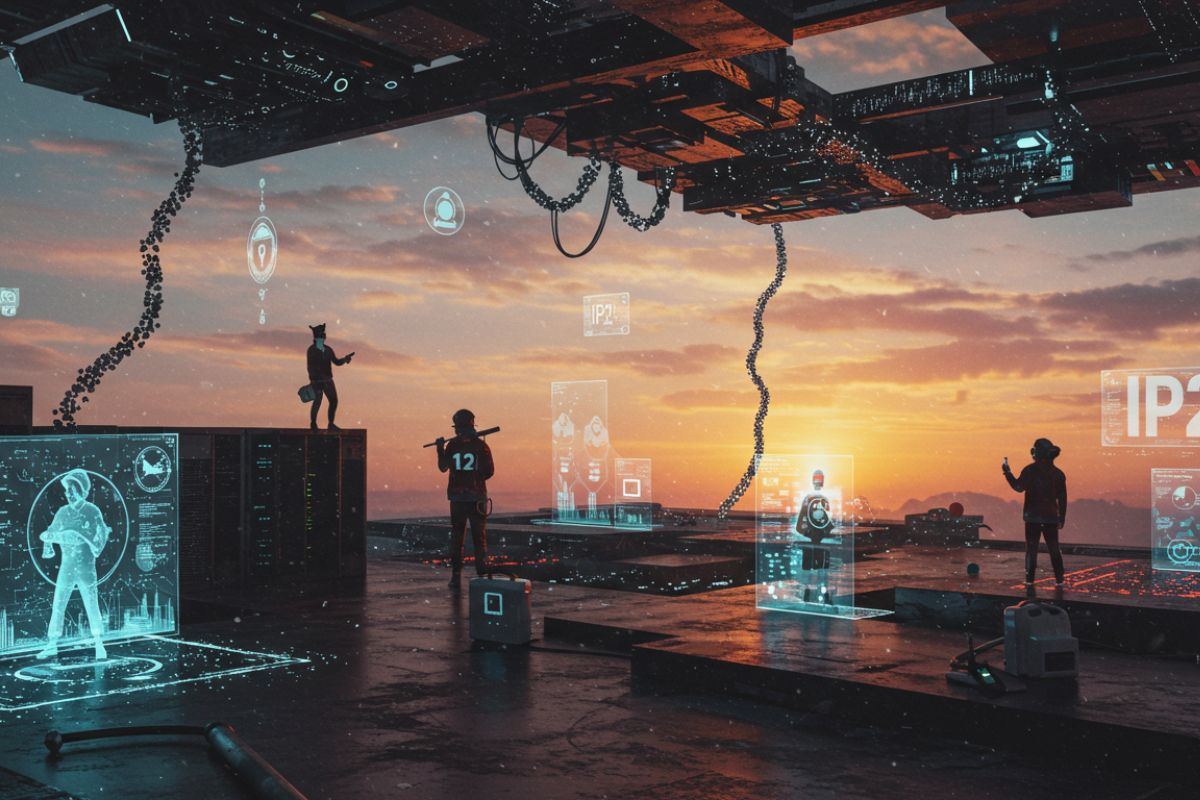The IP2 Network traces its roots back to Ice Poseidon, a once-popular Twitch streamer who pioneered the IRL streaming genre in the late 2010s. As Ice Poseidon built a cult following for his travel and lifestyle streams—often filled with unexpected drama and viewer-driven chaos—he inspired a wave of creators who wanted to capture that same raw energy.
Eventually, as platforms like Twitch began banning or restricting certain streamers for violating community guidelines, these creators and their fans gravitated toward a loosely affiliated network, later known as IP2 (Ice Poseidon 2).
How the IP2 Network Works
Decentralized Streaming Directory
IP2 functions primarily as a directory site, usually hosted on forums or blogs, where viewers can:
-
See which affiliated streamers are currently live
-
View real-time updates and links to streams
-
Read chat logs or join discussions
-
Access archives and community reactions
There’s no central authority—streamers manage their own content, but IP2 helps users discover and track multiple creators in one place.
IRL Streaming Culture
A typical IP2 streamer might:
-
Walk the streets with a camera, interacting with strangers
-
Travel to different cities or countries while live
-
Take part in unpredictable stunts, pranks, or debates
-
Let chat donations influence real-time decisions
This creates a form of interactive entertainment, where the audience can directly shape what happens during the stream.
Notable IP2 Streamers and Content Styles
The network includes a wide range of personalities and formats, such as:
-
Travel vloggers who document their journeys live
-
Urban explorers who visit interesting or off-limits places
-
Debaters and provocateurs who engage with the public on political or social topics
-
Controversial entertainers who thrive on unpredictability and edge
Some streamers have gained cult status within the IP2 community, amassing dedicated fan bases and frequent viewers.
The Controversy: Free Speech vs. Content Moderation
IP2 is often associated with unfiltered expression, which can include:
-
Offensive language or behavior
-
Debates on race, gender, politics, or religion
-
Stunts that challenge legal or ethical boundaries
This has made IP2 a magnet for controversy. While some see it as a bastion of free speech, others criticize it for encouraging harassment, toxic behavior, or boundary-pushing content that violates platform rules.
Platform Bans and Suspensions
Because of their content style, many IP2 streamers have:
-
Been banned from Twitch, YouTube, or other mainstream platforms
-
Moved to alternative streaming platforms like Kick, Rumble, or Odysee
-
Created independent channels and donation systems to avoid reliance on advertisers or platforms
This has resulted in a community that’s highly anti-censorship but also often polarizing.
The IP2 Community: Fans, Critics, and Viewers
A Double-Edged Audience
The IP2 audience is known for being:
-
Highly engaged and active in chat
-
Often unfiltered themselves, participating in the same raw tone as the streamers
-
Willing to both support and troll creators simultaneously
Some viewers donate money to influence live decisions, challenge streamers, or simply be recognized on-stream. Others engage in more aggressive behavior, including trolling or “IRL stream sniping” (showing up in person to interfere with the broadcast).
Legal and Ethical Considerations
Privacy and Consent
Because IP2 streamers film in public and often involve random strangers, concerns arise around:
-
Filming without consent
-
Inciting reactions for content
-
Endangering themselves or others
Monetization Without Oversight
Without centralized moderation or platform support, streamers monetize through:
-
Direct donations (PayPal, CashApp, crypto)
-
Merchandise or exclusive content
-
Third-party streaming platforms that allow adult or controversial content
This independence creates financial freedom, but also fewer safety nets.
Cultural Impact of the IP2 Network
Redefining Reality Streaming
In many ways, IP2 represents a new genre of internet content:
-
Less scripted than reality TV
-
More immediate than YouTube
-
More interactive than traditional entertainment
It has influenced how Gen Z and younger Millennials engage with content, creating expectations for realness, chaos, and viewer participation.
A Symbol of Anti-Mainstream Internet
The IP2 Network exists outside the polished realm of influencers and corporate-friendly content. It is part of the underground internet—raw, controversial, and reflective of the messiness of real life.
Criticism and Decline
Over time, some critics argue that:
-
The content has become repetitive or too extreme
-
The lack of moderation invites toxicity and hate speech
-
Some streamers use the platform to promote harmful behavior for views
As a result, the IP2 community is often banned or de-platformed, and viewership fluctuates depending on current drama or streamer activity.
Alternatives and the Future of IP2
Other IRL Communities
As streaming evolves, similar communities and alternatives have formed:
-
Kick.com offering fewer restrictions and higher creator payouts
-
Rumble and Odysee focused on free speech content
-
Decentralized live streaming apps (like PeerTube and Owncast)
However, few have captured the interactive chaos that defines IP2.
The Road Ahead
IP2 may not last in its current form, but its impact on digital media is undeniable. It challenged the boundaries of:
-
What is considered entertainment
-
How platforms moderate content
-
How viewers engage with real-time creators
Conclusion: IP2 Network and the Unfiltered Internet
The IP2 Network represents a raw, uncensored slice of internet culture—a decentralized group of live streamers redefining how people consume content. While often controversial, it offers a glimpse into the power of real-time interaction, viewer-led content, and digital freedom.
Whether you view it as a free speech haven, a chaotic experiment, or a cultural flashpoint, IP2 has carved out a unique space in the online world—and it continues to evolve with every stream.
